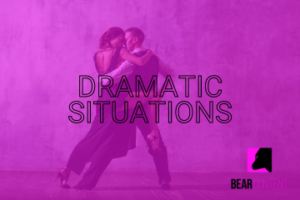When it comes to creating video content, many business owners feel overwhelmed.
Video creation can seem like an expensive and time-consuming endeavour, and often there’s no idea where to start.
In this post, we’ll share a secret to creating stunning videos without breaking the bank: using a shot list.
Creating a shot list is a great way to organize your thoughts and ensure you capture all the necessary footage for your video.
Not only will this help you save time in the editing process, but it will also help you produce a high-quality final product.
So, if you’re intimidated by the prospect of making videos, don’t worry – using a shot list is the key to success!
But first, what is a shot list?
In its most straightforward format, a shot list is a page or two that lists the various parts of a video you need to capture while filming.
Think of your shot list like a template; as you tick off each shot, you ensure nothing important is missed.
Rather than starting your filming with a rough idea of what you want to achieve, a shot list allows you to plan and execute precisely.
You only film what matters and ensure you get every essential part of the video.
Large movie productions rely on a shot list to coordinate multiple cameras, actors and production staff.
However, even the smallest production can benefit from a well-planned shot list.
What to include in your shot list
We’re a big fan of keeping things as simple as possible.
Your shot list needs to cover enough critical information to make it valuable without becoming so detailed it is hard to read or reference on the day.
Start by breaking your filming up into scenes. These don’t necessarily need to be in the correct order for the finished video!
We recently spent an afternoon and evening filming at four locations, with the third location coming first in the edited video. It can feel confusing jumping between scenes and locations while filming, but a shot list helps you keep the production in order.
Make sure to include a note of your location, the type of shots you want to capture, who is involved in each scene, and any notes, including the props required.
When drawing up our shot lists, we include any scripted dialogue alongside the scene description too.
Try to group similar shots, as it’s easier for all involved to batch the production this way.
Capture all of your shots
An engaging video usually relies on a range of different shots.
Resist the temptation to film everything from one angle and at a single distance. Mix it up!
Capture a range of shots from wide (establishing) to extreme close-ups.
Use different camera angles too. When I was learning how to film documentaries, I was taught to consider everything from a worm’s eye view to a bird’s eye view.
One of my favourite TV comedies, Peep Show, uses point-of-view (POV) filming, which can be fun to include too.
Move your camera around. Static shots have a part to play in videos, but including some movement keeps things interesting.
What gear will you use?
Preparing a shot list also allows you to plan the gear you will need for filming each scene.
Yes, you will need a camera (!), but what about an action camera (GoPro or similar) to fit in places regular cinema cameras can’t go? What about a drone, with the appropriate licensing, permission and insurance, of course!
Think about your lighting and audio too.
Some scenes can use natural light, while others require portable studio lights, either mains or battery-powered.
We filmed in pitch-dark woodland during a shoot earlier this month, using a very powerful handheld LED light plugged into a large battery bank to light that scene.
You will be able to use a clip-on lav mic to record audio in some scenes, and others are better suited to the high-quality audio you can capture using a shotgun mic on a boom pole.
Don’t forget spare batteries and memory cards too. Always take more than you think you will need.
Carry out a dry run
It’s always worth sitting down with your team and running through the shot list before the filming day.
Don’t wait until the day to review the shot list and consider improvements.
Running through your shot list step-by-step allows everyone to understand their role and suggest changes before you arrive ready to film.
Check it off on the day
One person should take responsibility for the shot list on the day, referring back to it constantly to ensure every shot is captured as planned.
The producer might not be filming or directing the action, but they should keep an overview of the activity.
When you’re in front of or behind the camera, it can be hard to track what you recorded, especially if multiple takes are required.
Keeping on top of the shot list throughout the filming will simplify the editing process, as you can save a note of your favourite/preferred takes.
***
A shot list is essential for anyone filming a video, whether commercial or event footage.
By actively using your shot list throughout the day, you can be sure to capture all the necessary footage and avoid any mishaps.
What other methods do you use to ensure that your videos are well-organized and complete? Will you be using a shot list next time you film?



